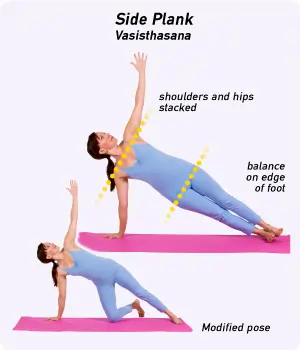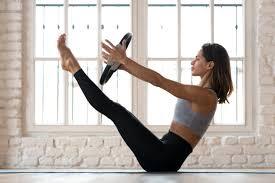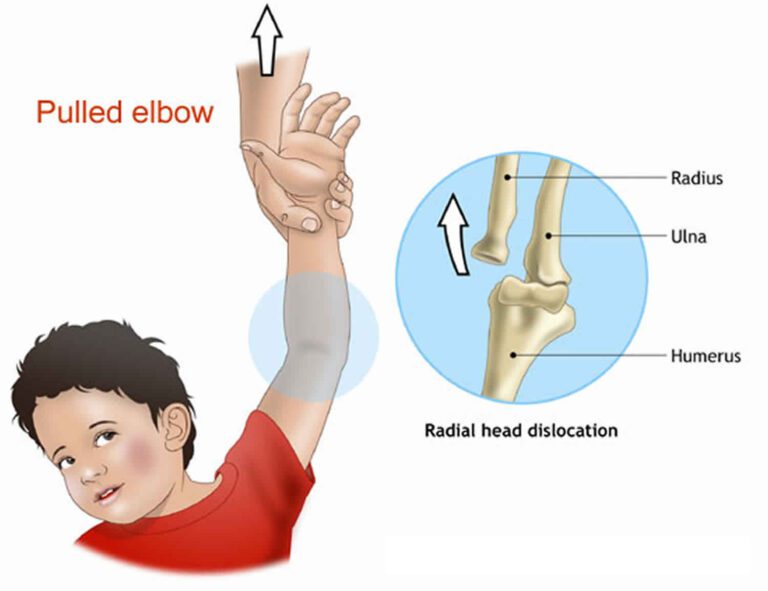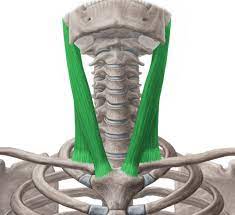Triceps stretching exercise
Table of Contents
What is a triceps stretch exercise?
Tricep stretch exercise is the arm-stretching method that targets the triceps brachii muscles on the backside of the arms. Proper stretching and tricep stretches may ready the upper arm muscles for weightlifting as well as cardio exercises & support muscle recovery post-workout.
Health Benefits of performing triceps stretching
There are some benefits of doing triceps stretching, namely:
- Improve the range of motion of the arm as well as increase flexibility.
- Tricep stretches may increase the blood flow in the arm and decrease soreness.
- Tricep stretches are better for the arm as well as shoulder health. By stretching the tricep muscles before doing upper body exercises,
- The physical therapist can help to decrease the chance of a rotator cuff injury.
- It may prevent the tightness of muscles as well as loose connective tissues.
- The patient does not need to use any equipment during stretching.
Anatomy of the triceps brachii muscle
Origin of a Triceps Muscle
All the three heads of the triceps brachii muscle have varied origins, such as,
The long head arises from an infraglenoid tubercle of the humerus.
The lateral head originates from the oblique ridge above a spiral groove on the upper part of the posterior surface of a shaft of the humerus.
The medial head arises from a lower part of a shaft of the humerus, below a spinal groove.
The medial head of the triceps brachii muscle is deeper than a long as well as lateral head.
The term medial as well as lateral is decided concerning positions of a head to that of a radial groove.
Insertion of the Triceps Muscle
As mentioned earlier a triceps muscle might have a different origin, but insertion is the same. All three heads collaborate as well as form a single tendon. The single tendon inserts itself into an upper portion of an ulna, in a bony prominence known as an olecranon process on the posterior side.
Nerve Supply of the Triceps Muscle
The triceps muscle is innervated by a radial nerve, which is a branch of brachial plexuses with the nerve roots C6, C7, as well as C8.
Recent studies on a cadaver found that the inner & outer head of the triceps muscle is also supplied by an ulnar nerve.
Also, a long head is supplied by an axillary nerve.
Blood Supply of the Triceps Muscle
The triceps muscle is supplied by a deep brachial artery along with ulnar collateral arteries.
Venous drainage is done by a brachial vein which runs deeper along with a brachial vein.
The function of the Triceps Brachii muscle
The chief function of the triceps is the extension of the forearm from the elbow joint.
Along with this, the triceps also works as the stabilizer of an elbow joint during performing fine movements.
Since a long head of the biceps originates from an infaglenoid tubercule, this plays a role in stabilizing a head of a humerus while an arm is outstretched sideways. This also plays a role in helping with an extension as well as adduction of the arm.
A medial head plays a role in keeping a forearm straight during rotated outwards or inwards.
A lateral head is regarded as the strongest of all the heads & plays the same role as that of a medial head.
Types of triceps muscle stretching
There are some common types of muscle stretching are:
- Triceps pull-down
- Standing bench triceps stretching
- Triceps Extension With the Band
- Towel Triceps Stretch
- Chair Tricep Stretch
- Standing Arm Swings
- Overhead Triceps Stretch
- Leaning Tricep Stretch
- Standing Bench Triceps Stretches
- Horizontal Arm Stretches
Triceps pull-down

How to do the stretch: Stand straight & the feet could be shoulder-width apart.
Grab one end of a resistance band with the left hand.
Place the left hand just below the shoulder level, and firmly hold the resistance band.
Grasp an opposing end of the resistance band with the right hand. Place the hand at the level of the hip.
Inhale as well as stick the left hand against the chest throughout the movement.
During this inhale draw a band down towards the floor with the right hand, until the right arm is completely straight.
Pull the band as much as the patient can without snapping back & hold the position.
Exhale as well as slowly return the right arm to hip level, relieving the tension created by a resistance band.
Repeat & switch the arm.
Standing bench triceps stretching
How to do the stretch: Stand straight with the feet apart, the left leg should be straight & put behind the bent right leg.
Place the right elbow on a bench.
Breathe inhale as you incline towards a bench.
When inclining, apply some pressure to the right elbow & bent right leg.
Hold the position for 30 seconds.
Then, instruct the patient to exhale as you drive away from the bench, correct the posture & return the right arm to its side.
Repeat the process on the other arm.
When the patient switches the arm, switch the legs too.

Triceps Extension With the Band
Triceps Extensions With the Band may offer multiple benefits in comparison to other dynamic stretches as they also act as a form of resistance training. In addition to gaining the benefits of the triceps stretch, these specific extensions may also work to improve muscle mass too.
Set-Up:
To perform the triceps stretch the patient will require a resistance band or an elasticated piece of material that the patient can comfortably stretch behind the back.
Starting Position:
Embark by standing tall as well as straight, the feet should be positioned slightly further than the shoulder-width apart.
Place an elasticated band behind the back.
With the right-hand grip the top of a band from between the shoulders.
With the left-hand grip a band from the bottom, holding it just above the glutes so a band is vertical down the back.
For reference, a right elbow extended over the head should be pointed towards the roof, while the left elbow should be parallel to the ground.
Execution:
Breathe in & with the right hand slowly pull a band towards the top of the head.
As a band rises the right arm should be extending outward, but never fully straighten.
Maintain a tight grip on the bottom of a band to create resistance.
Breathe out & slowly pull a resistance band down towards the ground with the left hand.
When pulling a band down the left arm should be extended until it is perfectly straight.
Maintain a tight grip on the top of a band in order to create resistance.
Repeat this stretch by switching arms.
What Muscles Does This Stretch Engage?
Triceps
How Long Should I Hold the Stretch For?
30 Seconds
Mistakes to Avoid:
Safety In Relation To Over-Extension: When extending the arms above & behind the back, the patient runs the risk of over-extending the muscles. Take care when performing triceps stretching exercises with a resistance band as over-extension could result in pulled or strained muscles.
Equipment Safety: Resistance bands have a tendency to become slippery & hard to grip. In order to stop a band from snapping back as well as hitting the body, ensure that the patient should keep a tight hold & do not try to use a weighted band that is beyond the strength ability.
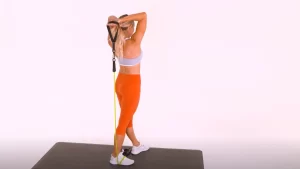
Towel Triceps Stretch
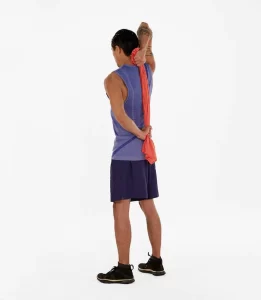
Similar to that of the Triceps Extension with the Band, Towel Triceps Stretches are a dynamic form of resistance training. However, please be aware that, unlike stretching with resistance bands, towels are not elasticated, meaning that the muscles will go through a higher intensity workout.
Set-Up:
All the patient needs for this stretch is the towel, but be sure it is large enough to fit around the back.
Starting Position:
Stand tall as well as straight with the legs at a hips-width apart.
Place a towel behind the back.
With the right arm, reach over the back of the head & grab hold of the top of a towel.
Keep the left arm straight on a level with the hip while holding the bottom of a towel.
Much like with Triceps Extensions, one elbow can be pointed up towards the roof whereas the other should be parallel with the ground.
Execution:
Breathe in & using the right hand slowly pull a towel above the head.
Once a towel is above the head, the right arm should still be slightly bent.
Pull down on a towel with the left hand in order to create resistance.
Breathe out as well as pull the towel towards the bottom of the back with the left hand.
The left arm should be perfectly straight after pulling a towel downward.
Pull the toward using the right hand in order to create resistance.
Swap hands & repeat this process.
What Muscles Does This Stretch Engage?
Triceps
How Long Should I Hold This Stretch For?
20-30 Seconds
Holding this triceps stretching exercise for 20-30 seconds, & you should hold both the pull-up position for 30 seconds, followed by the separate 30 seconds for a pull-down.
Mistakes to Avoid:
Over-Extension: As a towel is not elasticated pulling on it too hard could result in over-extension in the muscles. Never force yourself into an uncomfortable position, if something does not feel right stop immediately.
Chair Tricep Stretch
The dynamic triceps stretch is something that everyone may do, no fancy equipment is required all the patient need is a sturdy chair.
Set-Up:
In order to execute the dynamic triceps stretch, the patient will need the chair.
Starting Position:
Start by sitting in a sturdy chair, with both feet planted firmly on the ground at the shoulder-width apart.
With both hands grab the front of a chair & slowly move the body of the chair’s edge.
Keep the back upright, & push the legs out so they are straight out in front of you.
Execution:
Breathe in & bend the elbows down as well as lower the body towards the ground, but do not directly touch it.
Breathe out & push yourself upward, be sure to keep your legs straight.
Repeat this process for as many reps as the patient deem necessary.
What Muscles Does This Stretch Engage?
Main Muscle: Triceps
Secondary Muscles: Delts, Pectorals, as well as Lats
How Long Should I Hold the Stretch?
3 Sets of 10 reps
The triceps stretching exercise is slightly different from others to appear on our list, as it needs you to focus more on reps and sets, rather than the amount of time, it is held for.
Mistakes To Avoid:
Incorrect Chair: While this does sound somewhat pedantic, please ensure that the patient has a sturdy chair that will not roll or break under the pressure of the weight.
Slipper Hands: If the patient is working with a wooden chair or a material that may be quite slippery be sure to wash or power the hands thoroughly before practicing. If the patient begins to sweat this could prompt you to slip off & injure yourself.
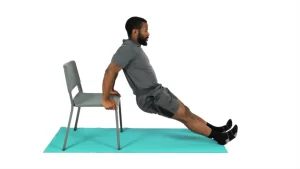
Standing Arm Swings
The standing triceps stretch also engages the entire upper arm & chest area, as well as is super beneficial for all the runners out there.
Starting Position:
Engage the core & keep the neck, spine as well as back perfectly straight.
Proceed to bend the knees as well as enter a squatting position.
Execution:
For this stretch, the patient wants to control the breathing, as if the patient will actually running. Make sure they’re strong & steady breaths.
Stand in the same spot & begin to swing the arms back and forth. Mimicking the pattern of running.
Try to keep the arms at 90-degree angles, making sure they do not cross the body.
Gradually increase the speed until you are pushing yourself to the limit.
What Muscles Does the Stretch Engage?
Main Muscle – Triceps
Secondary Muscles – Deltoids, Biceps as well as Pectorals
Standing Arms Swings are arguably the most beneficial dynamic triceps stretches that the patient may incorporate into the workout routine, as they benefit the entire arm & upper body.
How Long Should the person Practice This Stretch For?
30-60 Seconds
Mistakes to Avoid:
Swing the Arms The Right Way: Make sure the patient swings the arms backward rather than outwards when practicing these dynamic triceps stretches. Swinging the arms forward will engage a completely different group of muscles.
Chafing: If chafing happens when engaging with the dynamic triceps stretch you probably have not extended the arms far enough. Try to make the arm circles bigger to avoid this issue, by opening the chest & shoulders further.
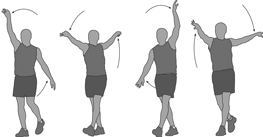
Overhead Triceps Stretch
One of the great benefits of the particular static triceps stretch is that the patient can practice it standing or even seated, meaning the patient can do it while relaxing following the intense workout.
Starting Position:
Begin this Overhead Triceps Stretch exercise by standing tall with the feet the shoulder-width apart.
Extend the right arm over the head, ensuring that the forearm rests between the shoulder blades.
Keep the bicep as close to the ear as possible.
Execution:
Breathe in & with the left hand grab the bent right elbow.
Push down gently against a right elbow to create slight resistance, if the patient feels pain or even sensitivity stop immediately,
Hold the pose for the recommended amount of time, maintaining the gentle push.
Breathe out as you let go of the arm, easing the body out of position.
Swap arms, this time extending the left arm behind the shoulder blades
What Muscles Does This Engage?
Triceps
How Long Should the patient Hold This Stretch For?
30 Seconds
Mistakes to Avoid:
Too Relaxed: Just the patient may do these static triceps stretches sitting down does not mean you should put in half an effort. Give it your all, just as you would with any other stretch.
Do not Force the Arm Down: When previously discussing an issue of over-extension in relation to triceps stretching exercises we have discussed the importance of not forcing things. Do not push down too heavily on the elbow, as it could seriously injure the shoulder.
Leaning Tricep Stretch
Leaning Tricep Stretches are highly beneficial if the patient is looking to engage in resistance training but does not have any equipment on hand.
Starting Position:
Face the wall standing the arms-width away, the line of sight may be directly facing a wall.
Raise the right elbow above the head.
Bring the right forearm to the side of the head, positioned just above the ear & rest the hand on the back of the neck.
Execution:
Breathe in & place the right elbow against a wall.
Adjust the posture so the patient is leaning forward with the chest, but never allow it to touch a wall.
With gentle force push the arm against a wall, and the patient should feel the stretch in the upper arm.
Breathe out & slowly push the body away from the wall, correcting the posture & lowering the right arm to the side.
Repeat the exercise with the left arm.
What Muscles Does This Engage?
Triceps
How Long Should the patient Hold This Stretch For?
20-30 Seconds
Mistakes to Avoid:
Do not Get Too Close to a Wall: Whether the patient is standing too close or leaning the chest against it, relying on a wall for support will not allow the patient to feel the full benefit of the triceps stretching exercise.
Do not Apply Too Much Pressure: When discussing how to stretch triceps in both a safe & efficient manner we have stressed the importance of not applying too much pressure. It will only result in strained muscles, so if these triceps stretches are causing discomfort stop & readjust the position accordingly.
Standing Bench Triceps Stretches
As another example of the static triceps stretch that incorporates bodyweight training, Standing Bench Stretches are sure to relax the muscles following an intense bout of exercise.
Set-Up:
For the stretch, the patient will need the incline bench or another chest-high, sturdy structure.
Starting Position:
Stand tall with the feet apart, the right leg should be straight & placed behind the bent left leg.
Place the left elbow on top of a bench.
If the patient is looking to purchase their own incline bench we can provide some recommendations in our list of the 19 best weight benches for all workouts.
Execution:
Breathe in as the patient lean towards the bench.
When leaning, apply gentle pressure to the resting elbow & bent left leg.
Hold the position for the recommended time.
Breathe out as the patient push away from a bench, correcting the posture & returning the left arm to its side.
Repeat the process by switching arms.
When switching arms be sure to switch legs too, for instance, when resting the right arm on a bench the right leg should be the one that is bent and in front of you.
What Muscles Does This Stretch Engage?
Triceps
How Long Should I Hold This Stretch For?
30 Seconds
Mistakes to Avoid:
Applying too Much Pressure: Leaning too far in & applying too much pressure to the arm could severely damage the elbow. Take care when doing the stretch, remember it should never feel painful.
Equipment Safety: When using any kind of instrument caution should be adhered to. Even though the patient is only leaning against it, be careful with an incline bench, as the patient could slip & fall face first into it.
Horizontal Arm Stretches
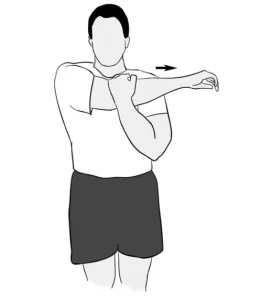
When looking to stretch triceps the chances are that everyone immediately goes to the specific stretch. But whilst this is incredibly popular, does the patient knows the full benefits of this triceps stretch?
Starting Position:
Stand tall with a head, neck as well as spine in a perfectly straight line.
The feet should be positioned shoulder-width apart.
Raise the right arm across the chest, ensuring that this remains straight.
Execution:
Breathe in & raise the left arm upward.
Bend the left arm in order to cradle the right.
With the left arm start to push the extended right arm towards the chest.
Hold this stretch ensuring to keep the same amount of pressure throughout.
Breathe out as well as lower both arms.
Repeat the process by alternating arms.
What Muscles Does This Stretch Benefit?
Primary Muscles: Triceps
Secondary Muscles: Deltoids as well as Pectorals
If the patient is searching for good triceps stretches that also engage other muscles we would highly recommend incorporating Horizontal Arm
How Long Should the patient Hold This Stretch For?
30-40 Seconds
Mistakes to Avoid:
Amount of Pressure: When practicing these static triceps stretches avoid putting extra pressure on the arms. If the patient pushes down too hard you could dislocate or seriously injure the shoulder. Stretching fixes the shortening that happens when muscles are not used by opening them the full length.
How Often Should the patient Practice Triceps Stretch?
As with other muscle groups, the patient will need to stick to a strict schedule in order to avoid overtraining the triceps. Most athletes make the mistake of training their triceps harder simply due to they are larger than the biceps.
Common mistakes the patient needs to avoid when performing the tricep stretch
There are some common mistakes that the patient does not make while stretching is:
- The patient does not lower enough: If you are not dipping lower to the body properly, the arms will not properly be contracted .so make sure to lower the body properly but do not touch the floor.
- Keeping the elbows too far apart: Keep the elbows at a shoulder-width apart. Closer or wider than that may cause an injury.
- Pushing yourself up using the legs: This exercise targets the upper body, using the legs for that makes you delay the result.
- Too fast exercise: Do not perform fast motion & give rest to muscles.
- Arm locking is not proper: The arms are not locking properly making you less muscle stretching.
- Adding too much weight: Some individuals put weight on their legs during performing triceps dips. if the patient is a beginner then you take caution or not perform with weight.
- Repetitions are not enough: Performing 20 reps & 5 sets is the basic need. Anything less than the protocol will not give the patient any results.
- Not holding the position: When the patient is doing stretching, hold a position for a second or two.
- Not keeping the feet in the right position: The patient needs to balance himself while stretching so places the feet properly on the floor.
- Warm-up exercise necessary for triceps dips: Before the patient starts triceps dips you need to do warm exercise of the arm.
Things the patient does not perform on the stretching day
There are some matters the patient should not do on the stretching day are:
- Do not start the workout with a weak movement.
- Remember, do not forget an arms overhead motion.
- Do not allow the elbows to dazzle.
- Never put the elbow down when performing kickbacks.
- Never turn down into the multi-joint motion.
- Do not lift a heavy weight which will lead to limiting your range of motion.
- Do not perform triceps stretches immediately before chest or even shoulder exercises.
- Do not lock the elbows while stretching may cause damage to the joint.
FAQ
What causes tight triceps?
Triceps tendonitis is often caused by activities that need forcefully extending an elbow. Examples include throwing the
baseball, hammering, bench presses, as well as gymnastics. These activities may cause more strain if you quickly improve how hard or how often you do them.How long does it take to heal the strained tricep?
As most triceps tendonitis is treated non-operatively, a tendon usually heals within 4 to 6 weeks. Athletes may also assist
prevent further injuries by properly warming up before play as well as icing an elbow if it hurts after activity.What does the strained tricep feel like?
Symptoms include pain in a muscle at the back of an upper arm or the attachment points at an elbow or shoulder. There can be mild swelling or even bruising over a muscle. Pain is usually sudden in onset as well as a small popping or even ripping sensation can be felt.
How long do sore triceps last?
Soreness may take one to two days to set in after you overexerted it & usually lasts just a few days. This also depends on the exercise, how prolonged the patient did exercise, and also the duration of the exercise. Severe or even high-intensity exercises take too much time to recover.
How may I speed up muscle recovery?
Drink a lot of water. Hydrating after the workout is key to recovery.
Get enough sleep. Getting proper rest is easily one of the most effective ways to recover from any form or even degree of physical exertion.
Eat nutritious food and Massage.Can the tight triceps cause shoulder pain?
A weak long head of the triceps may create poor positioning of a scapula resulting in shoulder pain, lower velocity when
throwing, or even limited range of motion. As a result, surrounding muscles, as well as joints, can compensate, creating systemic problems in a shoulder regionHow does the patient check for a torn tricep?
Magnetic resonance imaging is widely accepted as a gold standard to evaluate the size as well as the extension of a tear: triceps lesions often happen at a tendon insertion & result in either partial or even total tears.
What is the fastest way to heal tricep tendonitis?
While resting the muscle, the patient may try the following:
Avoid movement. Do not move the arm or even the tricep for 2–3 days.
Ice the area. Hold the bag of ice wrapped in the towel or the bag of frozen peas on the tendon.
Brace. Try using the brace or even a supportive bandage to support a muscle.

